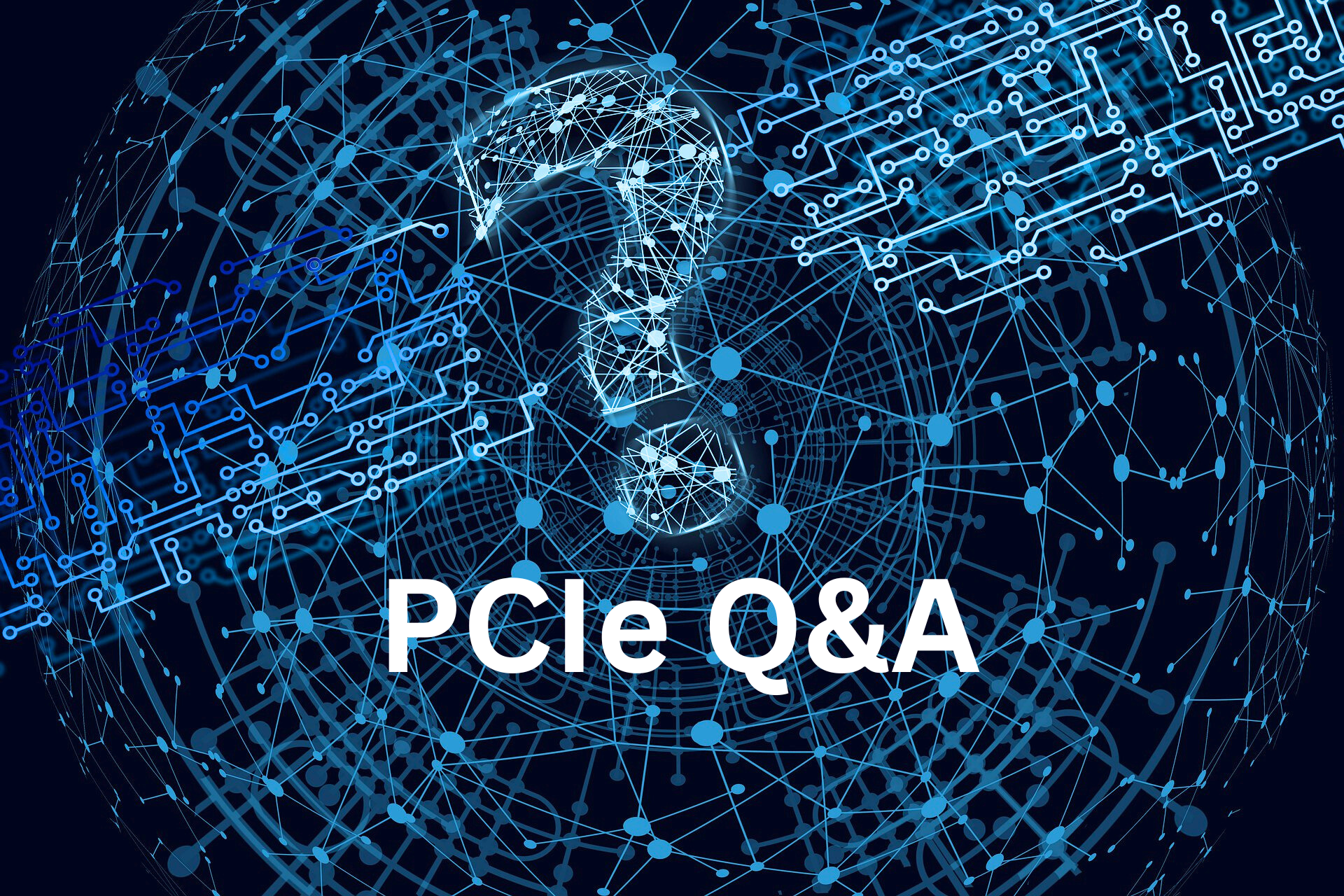 The SNIA Networking Storage Forum’s Storage Networking Security Webcast Series continues to examine the many different aspects of storage security. At our most recent webcast on applied cryptography, our experts dove into user authentication, data encryption, hashing, blockchain and more. If you missed the live event, you can watch it on-demand. Attendees of the live event had some very interesting questions on this topic and here are answer to them all:
Q. Can hashes be used for storage deduplication? If
so, do the hashes need to be 100% collision-proof to be used for deduplication?
A. Yes, hashes are often used for storage deduplication.
It’s preferred that they be collision-proof but it’s not required if the deduplication software does a bit-by-bit comparison of any files that produce the same hash in order to verify if they really are identical or not. If the hash is 100% collision-proof then there is no need to run bit-by-bit comparisons of files that produce the same hash value.
Q. Do cloud or backup service vendors use blockchain
proof of space to prove to customers how much storage space is available or has been reserved?
A. There are some vendors who are using proof of space to
map or plot the device. Once the device is plotted you can have a report which
provides the summary of storage space available. Some vendors use it today.
Since mining is the most popular application today, mining users use this
information to report available space for mining pool applications. Can you use
it for enterprise cloud to monitor the available disk space – absolutely.
Q. If a vendor provides a guarantee of space to a
customer using blockchain, does something prevent them from filling up the
space before the customer uses that space?
A. Once the disk is plotted there is no way for any other
application to use it. It will be flagged as an error. In fact, it’s a really
great way to ensure that no attacks are occurring on the disk itself. Each
block of space is mapped and indexed.
Q. I lost track during the explanation about proofs in
blockchain, what are those algorithms used for?
A. There are two concepts which are normally discussed and
create the confusion. One is that Blockchain can use different cryptographic
hash algorithms such as SHA-256 (one of the most popular), Whirpool, RIPEMD
(RACE Integrity Primitives Evaluation Message Digest), Dagger-Hashimoto and
others). Mercle tree is a blockchain construct which allows one to build a
chain by using hashes and data blocks. Consensus protocols is protocol for
decision making such as Proof of Work, Proof of Space, Proof of Stake and etc.
Each consensus protocol is using the distributed ledger to make a record for
the block of data transferred. Use of cryptography hashes allows us to create
trustless concept with encrypting data which is being transferred from point A
to point B. The consensus protocol allows us to keep the record of the data
blocks in distributed ledgers. This is a brief answer to the question and if
you would like to get additional information please contract
olga@myactionspot.com I will be happy to deliver the detailed session to
address this topic.
Q. How does encryption work in Storage Replication? Please advise whether this exists?
A. Yes it exists. Encryption can be applied to data at rest
and that encrypted data can be replicated, and/or the replication process can
encrypt the data temporarily while it’s in transit.
Q. Regarding blockchain: assuming a new transaction
(nobody has information yet), is it possible that when sending the broadcast
someone modifies part of the data (0.1% for example) and this data continues to
travel over the network without being considered corrupted?
A. The first block of data which is building the first
blockchain creates the authenticity. If the block and hash just created are originals they
will be accepted as originals, recorded in distributed ledger and moved across
the chain. BUT
if you are attempting to send a block on a blockchain which is already
authenticated this block will be not authenticated and discarded once it’s on
the chain.
Remember we said this was part of a series? We’ve already
had a lot of great experts cover a wide range of storage security topics. You
can access all of them at the SNIA
Educational Library.
The SNIA Networking Storage Forum’s Storage Networking Security Webcast Series continues to examine the many different aspects of storage security. At our most recent webcast on applied cryptography, our experts dove into user authentication, data encryption, hashing, blockchain and more. If you missed the live event, you can watch it on-demand. Attendees of the live event had some very interesting questions on this topic and here are answer to them all:
Q. Can hashes be used for storage deduplication? If
so, do the hashes need to be 100% collision-proof to be used for deduplication?
A. Yes, hashes are often used for storage deduplication.
It’s preferred that they be collision-proof but it’s not required if the deduplication software does a bit-by-bit comparison of any files that produce the same hash in order to verify if they really are identical or not. If the hash is 100% collision-proof then there is no need to run bit-by-bit comparisons of files that produce the same hash value.
Q. Do cloud or backup service vendors use blockchain
proof of space to prove to customers how much storage space is available or has been reserved?
A. There are some vendors who are using proof of space to
map or plot the device. Once the device is plotted you can have a report which
provides the summary of storage space available. Some vendors use it today.
Since mining is the most popular application today, mining users use this
information to report available space for mining pool applications. Can you use
it for enterprise cloud to monitor the available disk space – absolutely.
Q. If a vendor provides a guarantee of space to a
customer using blockchain, does something prevent them from filling up the
space before the customer uses that space?
A. Once the disk is plotted there is no way for any other
application to use it. It will be flagged as an error. In fact, it’s a really
great way to ensure that no attacks are occurring on the disk itself. Each
block of space is mapped and indexed.
Q. I lost track during the explanation about proofs in
blockchain, what are those algorithms used for?
A. There are two concepts which are normally discussed and
create the confusion. One is that Blockchain can use different cryptographic
hash algorithms such as SHA-256 (one of the most popular), Whirpool, RIPEMD
(RACE Integrity Primitives Evaluation Message Digest), Dagger-Hashimoto and
others). Mercle tree is a blockchain construct which allows one to build a
chain by using hashes and data blocks. Consensus protocols is protocol for
decision making such as Proof of Work, Proof of Space, Proof of Stake and etc.
Each consensus protocol is using the distributed ledger to make a record for
the block of data transferred. Use of cryptography hashes allows us to create
trustless concept with encrypting data which is being transferred from point A
to point B. The consensus protocol allows us to keep the record of the data
blocks in distributed ledgers. This is a brief answer to the question and if
you would like to get additional information please contract
olga@myactionspot.com I will be happy to deliver the detailed session to
address this topic.
Q. How does encryption work in Storage Replication? Please advise whether this exists?
A. Yes it exists. Encryption can be applied to data at rest
and that encrypted data can be replicated, and/or the replication process can
encrypt the data temporarily while it’s in transit.
Q. Regarding blockchain: assuming a new transaction
(nobody has information yet), is it possible that when sending the broadcast
someone modifies part of the data (0.1% for example) and this data continues to
travel over the network without being considered corrupted?
A. The first block of data which is building the first
blockchain creates the authenticity. If the block and hash just created are originals they
will be accepted as originals, recorded in distributed ledger and moved across
the chain. BUT
if you are attempting to send a block on a blockchain which is already
authenticated this block will be not authenticated and discarded once it’s on
the chain.
Remember we said this was part of a series? We’ve already
had a lot of great experts cover a wide range of storage security topics. You
can access all of them at the SNIA
Educational Library.
 The SNIA Networking Storage Forum’s Storage Networking Security Webcast Series continues to examine the many different aspects of storage security. At our most recent webcast on applied cryptography, our experts dove into user authentication, data encryption, hashing, blockchain and more. If you missed the live event, you can watch it on-demand. Attendees of the live event had some very interesting questions on this topic and here are answer to them all:
Q. Can hashes be used for storage deduplication? If
so, do the hashes need to be 100% collision-proof to be used for deduplication?
A. Yes, hashes are often used for storage deduplication.
It’s preferred that they be collision-proof but it’s not required if the deduplication software does a bit-by-bit comparison of any files that produce the same hash in order to verify if they really are identical or not. If the hash is 100% collision-proof then there is no need to run bit-by-bit comparisons of files that produce the same hash value.
Q. Do cloud or backup service vendors use blockchain
proof of space to prove to customers how much storage space is available or has been reserved?
A. There are some vendors who are using proof of space to
map or plot the device. Once the device is plotted you can have a report which
provides the summary of storage space available. Some vendors use it today.
Since mining is the most popular application today, mining users use this
information to report available space for mining pool applications. Can you use
it for enterprise cloud to monitor the available disk space – absolutely.
Q. If a vendor provides a guarantee of space to a
customer using blockchain, does something prevent them from filling up the
space before the customer uses that space?
A. Once the disk is plotted there is no way for any other
application to use it. It will be flagged as an error. In fact, it’s a really
great way to ensure that no attacks are occurring on the disk itself. Each
block of space is mapped and indexed.
Q. I lost track during the explanation about proofs in
blockchain, what are those algorithms used for?
A. There are two concepts which are normally discussed and
create the confusion. One is that Blockchain can use different cryptographic
hash algorithms such as SHA-256 (one of the most popular), Whirpool, RIPEMD
(RACE Integrity Primitives Evaluation Message Digest), Dagger-Hashimoto and
others). Mercle tree is a blockchain construct which allows one to build a
chain by using hashes and data blocks. Consensus protocols is protocol for
decision making such as Proof of Work, Proof of Space, Proof of Stake and etc.
Each consensus protocol is using the distributed ledger to make a record for
the block of data transferred. Use of cryptography hashes allows us to create
trustless concept with encrypting data which is being transferred from point A
to point B. The consensus protocol allows us to keep the record of the data
blocks in distributed ledgers. This is a brief answer to the question and if
you would like to get additional information please contract
olga@myactionspot.com I will be happy to deliver the detailed session to
address this topic.
Q. How does encryption work in Storage Replication? Please advise whether this exists?
A. Yes it exists. Encryption can be applied to data at rest
and that encrypted data can be replicated, and/or the replication process can
encrypt the data temporarily while it’s in transit.
Q. Regarding blockchain: assuming a new transaction
(nobody has information yet), is it possible that when sending the broadcast
someone modifies part of the data (0.1% for example) and this data continues to
travel over the network without being considered corrupted?
A. The first block of data which is building the first
blockchain creates the authenticity. If the block and hash just created are originals they
will be accepted as originals, recorded in distributed ledger and moved across
the chain. BUT
if you are attempting to send a block on a blockchain which is already
authenticated this block will be not authenticated and discarded once it’s on
the chain.
Remember we said this was part of a series? We’ve already
had a lot of great experts cover a wide range of storage security topics. You
can access all of them at the SNIA
Educational Library.
The SNIA Networking Storage Forum’s Storage Networking Security Webcast Series continues to examine the many different aspects of storage security. At our most recent webcast on applied cryptography, our experts dove into user authentication, data encryption, hashing, blockchain and more. If you missed the live event, you can watch it on-demand. Attendees of the live event had some very interesting questions on this topic and here are answer to them all:
Q. Can hashes be used for storage deduplication? If
so, do the hashes need to be 100% collision-proof to be used for deduplication?
A. Yes, hashes are often used for storage deduplication.
It’s preferred that they be collision-proof but it’s not required if the deduplication software does a bit-by-bit comparison of any files that produce the same hash in order to verify if they really are identical or not. If the hash is 100% collision-proof then there is no need to run bit-by-bit comparisons of files that produce the same hash value.
Q. Do cloud or backup service vendors use blockchain
proof of space to prove to customers how much storage space is available or has been reserved?
A. There are some vendors who are using proof of space to
map or plot the device. Once the device is plotted you can have a report which
provides the summary of storage space available. Some vendors use it today.
Since mining is the most popular application today, mining users use this
information to report available space for mining pool applications. Can you use
it for enterprise cloud to monitor the available disk space – absolutely.
Q. If a vendor provides a guarantee of space to a
customer using blockchain, does something prevent them from filling up the
space before the customer uses that space?
A. Once the disk is plotted there is no way for any other
application to use it. It will be flagged as an error. In fact, it’s a really
great way to ensure that no attacks are occurring on the disk itself. Each
block of space is mapped and indexed.
Q. I lost track during the explanation about proofs in
blockchain, what are those algorithms used for?
A. There are two concepts which are normally discussed and
create the confusion. One is that Blockchain can use different cryptographic
hash algorithms such as SHA-256 (one of the most popular), Whirpool, RIPEMD
(RACE Integrity Primitives Evaluation Message Digest), Dagger-Hashimoto and
others). Mercle tree is a blockchain construct which allows one to build a
chain by using hashes and data blocks. Consensus protocols is protocol for
decision making such as Proof of Work, Proof of Space, Proof of Stake and etc.
Each consensus protocol is using the distributed ledger to make a record for
the block of data transferred. Use of cryptography hashes allows us to create
trustless concept with encrypting data which is being transferred from point A
to point B. The consensus protocol allows us to keep the record of the data
blocks in distributed ledgers. This is a brief answer to the question and if
you would like to get additional information please contract
olga@myactionspot.com I will be happy to deliver the detailed session to
address this topic.
Q. How does encryption work in Storage Replication? Please advise whether this exists?
A. Yes it exists. Encryption can be applied to data at rest
and that encrypted data can be replicated, and/or the replication process can
encrypt the data temporarily while it’s in transit.
Q. Regarding blockchain: assuming a new transaction
(nobody has information yet), is it possible that when sending the broadcast
someone modifies part of the data (0.1% for example) and this data continues to
travel over the network without being considered corrupted?
A. The first block of data which is building the first
blockchain creates the authenticity. If the block and hash just created are originals they
will be accepted as originals, recorded in distributed ledger and moved across
the chain. BUT
if you are attempting to send a block on a blockchain which is already
authenticated this block will be not authenticated and discarded once it’s on
the chain.
Remember we said this was part of a series? We’ve already
had a lot of great experts cover a wide range of storage security topics. You
can access all of them at the SNIA
Educational Library.















Leave a Reply